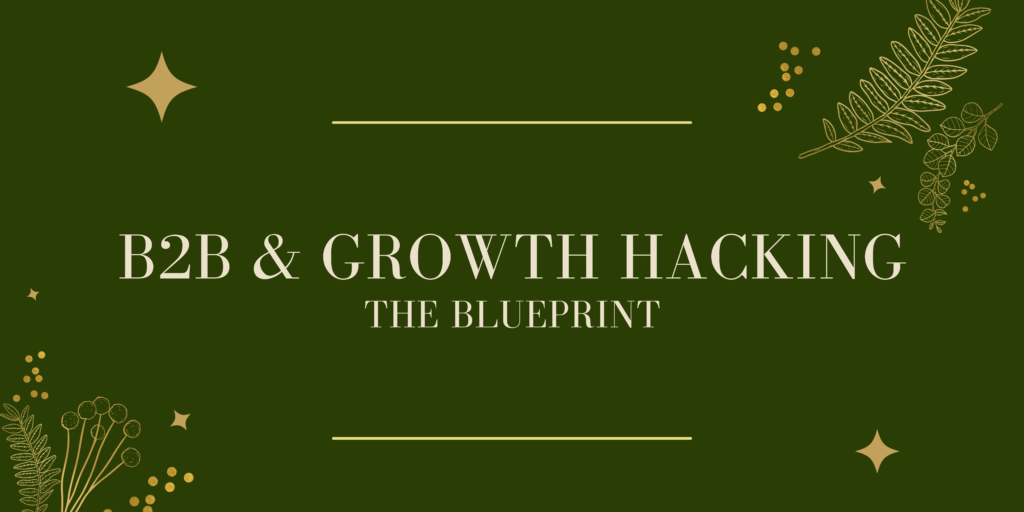
Introduction to Growth Hacking
The Basics
Growth hacking is a practice across multiple arenas that helps in the efficient and effective growth of the business. Businesses can use this instrument with expertise in cross-disciplinary strategies like data analytics, social media marketing, social media monitoring, engineering, creativity, research & development, etc.
Inherently, a group of people is assigned to assess the digital analytics of a particular niche of business and innovate and brainstorm ideas for it to break through in its respective market.
Growth hackers are extremely driven individuals with a sense of purpose for rewarding. They need to be skilled in the multiple disciplines mentioned above and apply those skills to excel. The market is extremely dynamic and keeps changing. Growth hackers need to be on their feet and creative to ensure success in these dynamic markets. Many companies have used growth hacking techniques to boost their particular markets—for example, Dropbox, Netflix, Airbnb.

The Process
Now that we understand the basics of growth hacking and what it entails, we look at the process.
The growth hacking framework can be summarised in an acronym: AARR: Acquisition, Activation, Retention, Revenue, and Referral. A mix of all of these shows the behavior of the market’s leaders, (potential) customers.
In the context of B2B growth and demand generation, it is important to look at all the aspects of the framework acronym. If only one is taken care of, for example, acquisition, many acquired customers will exist but no retention. This hurts the longevity of the business and may lead to waste.
What areas is growth hacking most effective in?
The following areas can be used as instruments to propel growth hacking. To ensure successful growth hacking, the following areas are to be tried and worked on with conviction and concentration by growth hackers to bring in successful returns.
– Marketing
– Business development
– Creativity and design, innovation
– Data analytics
– UX/UI
– Productivity
3. How to be a successful growth hacker

It is important to understand that failure is inevitable for growth hacking. Growth hackers should be individuals with drive and purpose ready to learn from their mistakes and execute their ideas. They should be data-driven and understand analytics and trends. This is the most crucial part of being a successful growth hacker. Understanding market dynamics and crunching numbers allow many acquired customers will exist. Strategizing to achieve success is a vital skill that growth hackers must own.
It is also important to understand that different markets and customers have different expectations and needs. A growth hacker must know how to thread strategies and growth to tailor their needs. Not every policy or strategy works in all business models or areas. They should be adaptable.
Successful growth hackers must thus be good at analyzing data and trends, adaptable, and unafraid to fail and learn from their mistakes.
4. Growth hacks that can be efficiently implemented
Here are some hacks and tips, and tricks that can boost growth hacking in the right direction.
Shareable content: The best way to boost the growth of any business is to create long-form shareable content. This acts as an infographic to potential customers. Information communication ensures that the prospect knows about your business or venture, allowing them to invest their intellect in it.

It embeds the content in Slideshare, E-Books, publishing portals, webinars, etc. This will help educate everyone viewing it and create a bond with them.
Make sure that the content is not too promotional but rewarding. Potential prospects tend to create a bond with content that teaches them something valuable.
For example, if you’re a paints company, teach the people how to safeguard their walls from dust, pollutants, etc.
Ensure shareability: Make sure that your content is palpable through the audience. If it’s posters or creatives, design is a key component. Content is key if its infographics are clear, concise, and understandable.
LinkedIn as an instrument: LinkedIn is a great platform that boosts growth. They have the concept of sponsored updates which is essentially a tool to find leads and create a network of a potential market. Engaging with a network of like-minded individuals with your business will encourage them to check the business out and contribute to it somehow.
Video Content: These days, video content seems to be gaining traction. Video content can use them in various promotional ways to grab a target audience. For example,
Training videos can be made as an educational incentive for people to invest their time and intellect in a business.
Interactive webinars: Holding interactive webinars with moderators who can provide demos and information on your product will boost prospect interest. It shows effort and intent from the side of the firm.
Creating social media channels goes a long way to creating purposeful and engaging video content. Youtube channels with interactive videos and customer testimonials or platforms like Instagram reels will promote growth.
Personalization and Customisation: Humans respond to being recognized as individuals. Thus using content or strategy to appeal to individual customers that will recognize them is vital. It ensures that they feel valued and helps build prospects. Cold content that does not resonate emotionally with prospects is disadvantageous in B2B relationships.
Freemium before Premium: Giving customers the best service and support in their free trial or a trial of premium features sans credit increases their interest in the product. It ensures them that paying for the extra features is investment-worthy. Added value appeal increases their trust in the product and its features. Picmonkey is a website that allows you to view the package before buying it for access.
Make the product easy to understand: ensuring that the product is easy to navigate to use and simple to understand makes it user-friendly. Running tests to see if the service is easy to navigate intuitively and use is crucial.
Call to action: In B2B relationships, it’s very important to add a call to action element that allows them to interact with prospects. Hotmail suggested inviting a friend that revolutionized their business. This ensures active participation.
Podcasting: Podcasting comes a great deal in marketing and can be extremely helpful and advantageous. We will discuss it more in the next section.
Using social proof to advantage: There is psychological proof that people tend to do something if they see others inclined to it. Online reviews, testimonials, and other proof work as great lead generation for B2B companies. Some tips to make this work are
Adding a feedback tile to the webpage
Displaying and posting client reviews and testimonials
Asking clients to leave reviews/ratings on Google
Leveraging conversational marketing with AI: Adding service bots to home pages or chat plugins on websites can be a great conversation starter for prospects. They also work as 24×7 services that guide the moment potential consumers land on site. Personalizing this service will also prove to be of great advantage.
5. The best tools for growth hacking
Now that we’ve learned how growth hacking can be extremely influential and helpful to businesses and can bring in great returns, it is important to assess the most useful and good tools that can benefit you to do the same. Following are some of them,
Mailchimp: Mailchimp is a marketing automation platform and e-mail marketing service. They help businesses grow bigger, and their biggest strengths are
Using Mailchimp doesn’t require any prior knowledge of HTML or CSS to design beautiful e-mails to use for marketing.
Their pricing model is affordable and free if you have less than 2000 subscribers. This is a great onboard advantage for new ventures looking for onboarding.
The CRM platform also collaborates with others t provide great designs in e-mail templates etc.
Hubspot: Hubspot is
a platform that offers marketing, sales, customer service, resources, and support that helps businesses grow. They help growth hack your company to endless limits. They provide many tools for free, including chatbots for conversational marketing and live chat functionality.
Google Ads: Google Ads is one of the platforms where several companies invest a million dollars in marketing their business or service.

Google Ads optimize search traffic which can be very effective in the case of businesses and services. They also hav
e a tool that helps tailor keywords. Google Analytics can also be used to tailor the traffic that comes towards your website.
Zoom: Zoom is a great tool to arrange video conferences and webinars. Video or voice call builds a great rapport with prospects if dispersed geographically. It shows intent and increases sales. People can also arrange Q&A convenience on Zoom through the chat window and convenience.
Find E-Mails: Find E-Mails analyses data and provides mail servers, names, records. You should send e-mails to verified addresses to avoid being blacklisted, and the sender score remains high. Attaching CTAs in the mails and getting people to click on hyperlinks actively and participate with the e-mail converts leads into business.
6. Points to remember during Growth Hacking.
Failure is the key to success: Dynamic and rapidly changing business environments. Growth hackers should anticipate major market changes so they can stay on their feet and be competitive. The key to success is constantly evaluating the market and changing dynamically if they fail.
Be data-driven: Analyzing data to use it to your advantage. Recording, storing and understanding it is crucial to strategize according to the needs of the market and growth pattern decided for the business or service.
Choose a smart customer pool: Tailoring the customer pool according to the growth planned for the business, service, or product will be efficient and effective. It breaks down segments of customers and business areas and campaigns around it.
Remarketing and Product Development: Involving the product development team and looping them with the plans for the development strategy of the product is an important tactic to meet the customer’s needs.
7. Conclusion
With the above information in mind, growth hacking is a great experimentation and marketing tactic to grow a business rapidly. Following the AARRR framework will increase the success of the marketing journey exponentially.

